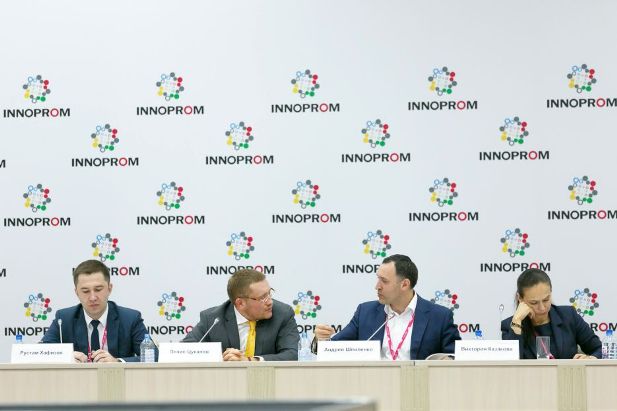Today the government of Russia carries out a reconstruction of the country’s economy, transforms its structure from the resource-based to an innovative model. The state has created good conditions for the investors. Such conditions include a ready infrastructure that is being offered (clusters, industrial parks, special economic zones), a system of administrative aid (special support institutions), a system of contracts with the developed tax and other preferences.
“Innovation development and modernization of economy”, including industry-based state programs, is a part of five program units which determine the state activities in the field.
At the same time, not all potential investors take part in the process. To our opinion, this is due to the fact that they require more information to take a decision on the investment. Thus we asked our talk partner, a notable expert in investment and a candidate of economic sciences, Andrey Shpilenko, to answer some questions about the investment environment in the country.
Andrey Viktorovich Shpilenko was born in 1975. A graduate of Ussuriysk Suvorov Military School, St.-Petersburg Higher All-Troops Command College and RF Presidential Russian Academy of Civil Service.
A director of the Association of clusters and industry parks, a deputy of the chairman of the Association of higher and new technologies zones “Silk Road”. The Associations of clusters and industry parks was founded in 2011 for interaction between its members and the federal and local authorities. It includes more than 50 organizations representing 26 regions in every federal district of Russia.
E Vesti: Andrey Victorovich, could you please tell us, what do you think about the opportunities of Russia for innovation? Is the innovative climate favorable in the country?
Andrey Shpilenko: Russia has the great research, development, and engineering and innovation potentials. Despite the turmoil that the country experienced in the 1990-ies, most of our academic schools have saved their viability. And if talented scientists and engineers were massively leaving the country in the first post-Soviet years, today the working conditions have been improved in Russia. Therefore, more and more scientists and engineers work in Russia. Moreover, they return from other countries.
However, many problems exist, that slowdown the innovative development in Russia. This is a high dependency of the Russian economy on resource-based exports, a lack of business activities, the political tensions which impede many international contacts, and, finally, the notorious economic crisis. At the same time, the government clearly sees these problems and it understands the necessity of their solution, not least due to the economy shrinking and the attempts of international isolation of Russia.
For instance, a need to reduce dependence of the Russian economy from the “oil curse” constantly talked in the previous years finally started to become a reality in 2014-2015. E.g., according to the Ministry of industry and trade, the exports of high-tech machinery and manufacturing industries increased by 10.5% compared to 2014. According to the data of the Russian export centre, the share of non-resource goods in total exports of Russia totaled 54% in dollar terms in 2015.
These figures show that Russia has not lost its innovation potential and it continues to realize it, regardless of a complex political and economic situation.
Of course, Russian peculiarities should be taken into account for the further development of non-resource and high-tech industries. In particular, a high share of the governmental participation in the economy and the vertical management structure of many industries. In this sense, we are closer to the experience of countries such as India, China and South Korea, who were able to combine the high dynamics of innovative development and a significant state role in the economy.
EV: Does business need innovation today? If yes, which kinds of it need it more and which less?
Andrey Shpilenko: As grandiloquent as it may sound, in the lack of innovation every business dies sooner or later. It is natural for any process – if not to mend the fire, it goes out. Any business interested in further developing in a competitive market, inevitably introduces innovations, whether technological, marketing or administrative innovation.
Another aspect is that different business types and sectors have different perceptions of innovation. There are sectors with long life cycle, they have already undergone a considerable development, and they are interested in cutting costs or so-called breakthrough innovations that significantly alter their effectiveness. But such innovation typically takes much time and requires large financial resources. This is especially true of those industries where, for historical reasons, so-called “natural monopolies” were formed, which operate in conditions of limited competition. Only state can stimulate innovation in such industries, in which it is actively involved. It forces these companies through legislation to implement innovative projects and to involve in the production chains of the agile small and medium enterprises that are able to offer these innovations.
A contrary example is sectors with a shorter life cycle, which are at earlier stages of development and therefore more flexible. Typically, a competition is more intensive in these industries, because the players have to constantly offer consumers new products and services.
EV: Russian or foreign business, which of these two is more interested in the investment in the clusters and the industrial parks?
Andrey Shpilenko: The willingness of investors to invest is not only determined by their own investment strategy and investment approach, but also the attractiveness of the investment object. There are lots of good and bad examples. But it is important to note, that much depends primarily on the investment policy of a particular region: how the region works with investors, what benefits and preferences it provides for them and if the procedures for creation and development of business are simple or complex, etc. Both clusters and industrial parks are designed to increase the investment attractiveness.
In clusters, this is achieved due to the presence of a developed system of scientific-technical and production cooperation, which allow to implement projects in the shortest possible time and reduce costs for their implementation. In the industrial parks it is achieved due to the availability of prepared technological and industrial infrastructure, which allows the investor to reduce costs for both research and development and production of new products.
Therefore, the clusters and the industrial parks are attractive sites for both Russian and foreign investors. But I would say that the Russian investors are now much more. The steady trends and new opportunities have arisen in domestic and foreign markets due to the devaluation of the ruble. It is a decrease in capital outflows and the necessity of import substitution in various industries. This leads to the fact that the Russian investors are ready to invest in business development.
Foreign investors are also actively investing in various sectors. However, due to a number of reasons, most of them perceive Russia as a market with high risk. That is why the state should develop the infrastructure that can reduce investors’ risks, such as clusters and technology parks. The special investment contracts are also very promising, as they fix the conditions for investors in the long term, even if significant changes happen in economic conditions.
EV: In short, what is the difference between cluster and industrial park?
Andrey Shpilenko: In world practice, the difference between these terms is quite vague. The cluster is usually a complex of businesses, service companies, suppliers of various goods and services, educational and financial institutions, which was historically formed on a certain territory. It may be the city, the region and the whole country. The international clusters also exist. A concept of “industrial park” is interpreted variously in different countries. In some countries an industrial park can be a building or several buildings, which created conditions for high-tech companies. In other countries an industrial park is a huge area, a city in which a zone was created to accommodate thousands of such enterprises. Such area has all necessary social, communal and transport infrastructure, tax or other privileges. In this case, an industrial park and cluster is approximately the same thing.
In Russia, the concept of cluster corresponds to the global definition. Currently, two types of clusters are defined in our country at the normative level. These are the innovative territorial clusters (they are 27 in Russia now) supported by the Ministry of economic development, and industrial clusters (according to various estimates, they are more than 120) supported by the Ministry of industry and trade.
In the Russian practice, a technopark is a territory up to several tens of hectares, on which all conditions for the location and development of high-tech companies are created. It is transport, utilities and engineering infrastructure (roads, electricity, gas, water) and a specialized technological infrastructure (laboratories, common use center, areas for pilot production, clean rooms, etc.). Unfortunately, a significant part of the Russian technoparks do not create such an infrastructure and, in fact, deal with development business, as they build the business centres financed by the state that have no conditions for innovation development.
In order to remedy this situation, the Association of clusters and technology parks has developed a national standard “Industrial Parks. Requirements”, taking into account best international and Russian practices of development of technoparks, which entered into force in 2015. We are actively working together with the Federal and regional authorities, and our aim is to increase the number of technology parks meeting the requirements of this standard.
EV: To your mind, which regions are more attractive for investors today?
Andrey Shpilenko: We cannot say that one region is always more attractive than the other. Because a lot depends on the specifics of a particular industry in which the money is invested. Some regions have historically formed specificity and competence.
However, there are some measures that the region must implement in order to attract investors. First and foremost, it is the appropriate legislation and incentives, and the simplification of bureaucratic procedures for investors.
Such regions are Moscow, the Moscow region, Voronezh region, Lipetsk region, Kaluga region, Ulyanovsk region, the Republic of Tatarstan.
EV: Did the rate of development of cluster and technoparks slow down due to the crisis? What are the prospects?
Andrey Shpilenko: Despite the crisis, the pace of development of the enterprises implementing projects within clusters and technology parks has only increased in recent years. This is due to the mentioned objective of import substitution and raising of non-resource exports, and it is also connected with the active position of the state to support such enterprises and projects.
Of course, not all technology parks and clusters are effective. There many questions arise on the activities of many of them. But in general, we can say that the industry shows a positive trend, despite the crisis.
EV: Thank youvery much!





